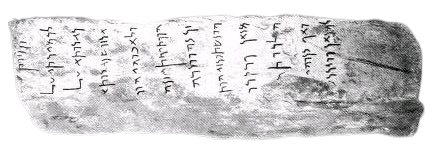Aramaic is a language that has a long history and has played an important role in the development of various cultures throughout the Middle East. The origins of Aramaic can be traced back to the 10th century BCE, when a Semitic-speaking people known as the Arameans began to settle in the region that is now modern-day Syria.
At the time, Aramaic was a spoken language used by the Arameans and other Semitic-speaking peoples in the region. However, it was not until the 8th century BCE that Aramaic began to emerge as a written language. This was largely due to the influence of the Assyrian Empire, which used Aramaic as a diplomatic language throughout their empire.
Over time, Aramaic continued to gain prominence as a written language and was adopted by various empires and cultures throughout the Middle East. It became the language of the Babylonian Empire and was used extensively in the Achaemenid Empire, which included modern-day Iran, Iraq, and parts of Central Asia.
In the centuries that followed, Aramaic remained an important language in the region and was used by various communities, including the Jews, who adopted it as their primary language following the Babylonian exile in the 6th century BCE. Aramaic also played a key role in the development of early Christianity, particularly in the Eastern Mediterranean region.
Today, Aramaic is still spoken by small communities in some parts of the Middle East, particularly in Syria, Iraq, and Iran. However, it is no longer widely used as a written language and has largely been replaced by Arabic and other languages in the region.
